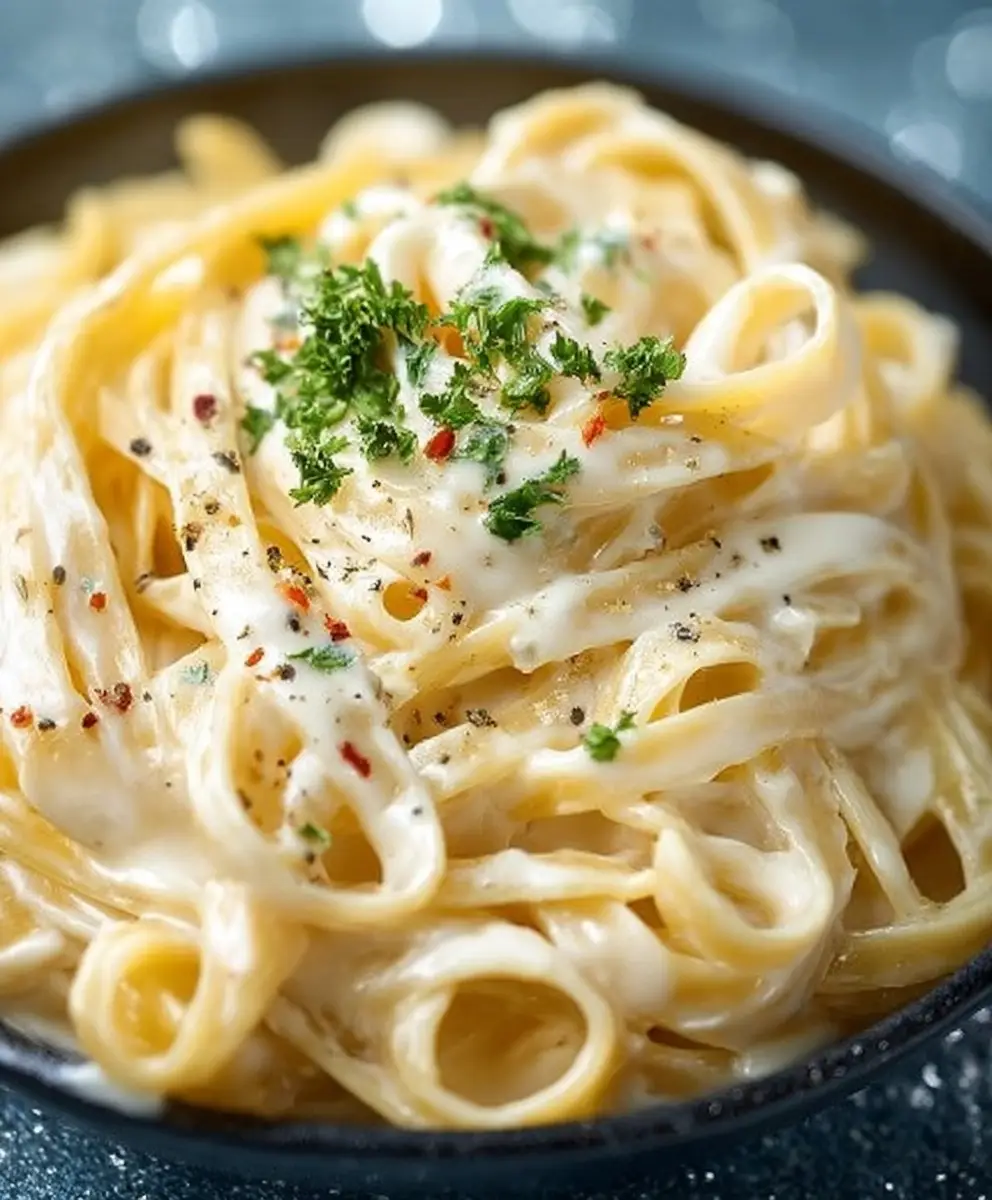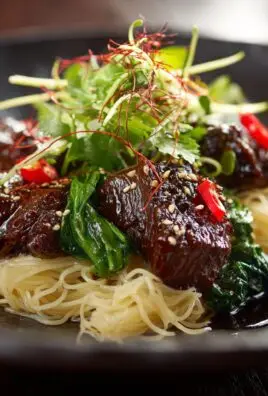Homemade Alfredo Sauce, that creamy, dreamy indulgence, is surprisingly easy to create in your own kitchen! Forget the jarred stuff – we’re about to embark on a culinary adventure that will elevate your pasta nights forever. Have you ever wondered why restaurant Alfredo always tastes so much better? The secret isn’t some closely guarded chef’s secret; it’s simply fresh ingredients and a little bit of love.
Alfredo sauce, as we know it today, has a relatively modern history. It was invented in Rome in 1908 by Alfredo di Lelio, who wanted to create a dish to tempt his pregnant wife’s appetite. He combined butter, Parmesan cheese, and pasta, creating a simple yet incredibly satisfying meal. While the original recipe was incredibly minimalist, variations have evolved over the years, but the core principle remains the same: rich, cheesy goodness.
People adore Alfredo sauce for its luxurious texture and comforting flavor. It’s the perfect blank canvas for adding protein like grilled chicken or shrimp, or vegetables like broccoli or mushrooms. Plus, learning to make Homemade Alfredo Sauce from scratch means you can control the ingredients and avoid any unwanted additives. The velvety smooth texture coats every strand of pasta, delivering a burst of cheesy, buttery flavor with each bite. It’s a quick and easy way to transform a simple pasta dish into a restaurant-worthy meal, and I’m excited to show you how!
Ingredients:
- 1 pound fettuccine pasta
- 1 cup (2 sticks) unsalted butter, cut into cubes
- 4 cloves garlic, minced
- 4 cups heavy cream
- 1 teaspoon salt, or more to taste
- 1/2 teaspoon black pepper, or more to taste
- 1/2 teaspoon nutmeg, freshly grated (optional, but highly recommended!)
- 2 cups freshly grated Parmesan cheese, plus more for serving
- Fresh parsley, chopped, for garnish (optional)
Preparing the Pasta:
- Bring a large pot of salted water to a rolling boil. This is crucial! The salt seasons the pasta from the inside out, and the rolling boil ensures even cooking. I usually add about 1 tablespoon of salt per gallon of water.
- Add the fettuccine pasta to the boiling water. Make sure all the pasta is submerged. If it’s sticking together, gently separate it with a fork.
- Cook the pasta according to package directions, or until al dente. “Al dente” means “to the tooth” in Italian. You want the pasta to be firm but not crunchy. Usually, this is about 8-10 minutes. Start checking for doneness around 7 minutes.
- Reserve about 1 cup of pasta water before draining. This is liquid gold! The starchy water will help the sauce cling to the pasta and create a creamy emulsion. Don’t skip this step!
- Drain the pasta immediately. Don’t rinse it! Rinsing removes the starch that helps the sauce adhere.
Making the Alfredo Sauce:
- Melt the butter in a large, heavy-bottomed saucepan over medium-low heat. Using a heavy-bottomed pan helps prevent the butter from burning. Keep a close eye on it!
- Add the minced garlic to the melted butter and cook for about 1-2 minutes, or until fragrant. Be careful not to burn the garlic, as it will become bitter. You just want it to release its aroma.
- Pour in the heavy cream and bring to a gentle simmer. Don’t let it boil! Simmering allows the cream to thicken slightly.
- Season with salt, pepper, and nutmeg (if using). Start with the amounts listed in the ingredients and adjust to your taste. I like a generous pinch of nutmeg for that warm, comforting flavor.
- Reduce the heat to low and gradually whisk in the Parmesan cheese, a little at a time, until it is completely melted and the sauce is smooth. This is important! Adding the cheese slowly and whisking constantly prevents it from clumping. If the sauce seems too thick, add a splash of the reserved pasta water to thin it out.
- Continue to simmer the sauce over low heat for about 5-10 minutes, stirring occasionally, to allow the flavors to meld. This step is crucial for developing a rich, complex flavor.
Combining Pasta and Sauce:
- Add the drained pasta to the saucepan with the Alfredo sauce. Toss gently to coat the pasta evenly with the sauce.
- If the sauce is too thick, add a little of the reserved pasta water, a tablespoon at a time, until it reaches your desired consistency. Remember, you want the sauce to cling to the pasta, not pool at the bottom of the pan.
- Continue to toss the pasta and sauce together for about 1-2 minutes, allowing the pasta to absorb the sauce. This will create a creamy, flavorful dish.
- Serve immediately, garnished with freshly grated Parmesan cheese and chopped fresh parsley (if desired). I like to serve it in warm bowls to keep the pasta hot.
Tips and Variations:
Adjusting the Thickness:
The thickness of your Alfredo sauce is easily adjustable. If it’s too thick, add more pasta water, a tablespoon at a time, until you reach your desired consistency. If it’s too thin, simmer the sauce for a few more minutes to allow it to thicken.
Adding Protein:
Alfredo sauce is delicious with added protein. Grilled chicken, shrimp, or scallops are all excellent choices. Simply cook your protein separately and add it to the pasta and sauce in the final step.
Vegetarian Options:
For a vegetarian version, consider adding sautéed mushrooms, broccoli, or spinach to the pasta and sauce. These vegetables add flavor and nutrients to the dish.
Spice it Up:
If you like a little heat, add a pinch of red pepper flakes to the sauce while it’s simmering. You can also add a dash of hot sauce to your individual serving.
Garlic Lovers:
If you’re a garlic lover like me, feel free to add an extra clove or two of garlic to the sauce. Just be careful not to burn it!
Cheese Variations:
While Parmesan cheese is the traditional choice for Alfredo sauce, you can experiment with other hard cheeses like Pecorino Romano or Asiago. These cheeses will add a slightly different flavor profile to the sauce.
Make it Ahead:
While Alfredo sauce is best served fresh, you can make it ahead of time and reheat it gently over low heat. Add a little extra cream or pasta water to thin it out as needed. Be aware that the texture might change slightly upon reheating.
Serving Suggestions:
Alfredo sauce is delicious served over fettuccine, but it also works well with other types of pasta, such as linguine, spaghetti, or penne. You can also use it as a sauce for lasagna or baked ziti.
Nutmeg Alternative:
If you don’t have nutmeg, you can omit it or substitute it with a pinch of mace. Mace has a similar flavor profile to nutmeg.
Cream Cheese Addition:
For an extra creamy and tangy Alfredo sauce, try adding 2-4 ounces of cream cheese to the sauce while it’s simmering. Make sure the cream cheese is softened before adding it to the sauce.
Lemon Zest:
A little lemon zest can brighten up the flavor of Alfredo sauce. Add about 1 teaspoon of lemon zest to the sauce while it’s simmering.
Wine Pairing:
Alfredo sauce pairs well with a variety of white wines, such as Chardonnay, Pinot Grigio, or Sauvignon Blanc. The acidity of the wine helps to cut through the richness of the sauce.
Storage:
Leftover Alfredo sauce can be stored in an airtight container in the refrigerator for up to 3 days. Reheat gently over low heat, adding a little extra cream or pasta water to thin it out as needed.
Freezing:
While it’s not ideal, you can freeze Alfredo sauce. However, the texture may change upon thawing and reheating. The sauce may become grainy or separate. To minimize this, cool the sauce completely before freezing it in an airtight container. Thaw it in the refrigerator overnight and reheat gently over low heat, whisking constantly. You may need to add a little extra cream or pasta water to restore the sauce’s creamy texture.
Troubleshooting: Sauce is Grainy
If your Alfredo sauce becomes grainy, it’s likely due to the cheese clumping. This can happen if the cheese is added too quickly or if the sauce is overheated. To fix this, try whisking the sauce vigorously over low heat. You can also add a tablespoon of cream or pasta water to help smooth it out. If all else fails, you can strain the sauce through a fine-mesh sieve to remove the clumps.
Troubleshooting: Sauce is Too Salty
If your Alfredo sauce is too salty, you can try adding a squeeze of lemon juice or a pinch of sugar to balance the flavors. You can also add a little extra cream or pasta water to dilute the saltiness.
Troubleshooting: Sauce is Too Bland
If your Alfredo sauce is too bland, you can add more salt, pepper, or nutmeg. You can also add a pinch of garlic powder or onion powder to enhance the flavor. A squeeze of lemon juice can also brighten up the flavor.
The Importance of Freshly Grated Parmesan:
I cannot stress this enough: use freshly grated Parmesan cheese! Pre-shredded Parmesan cheese often contains cellulose, which prevents it from melting smoothly into the sauce. Freshly grated Parmesan cheese will melt beautifully and create a much creamier, more flavorful sauce.
Don’t Overcook the Pasta:
Overcooked pasta will become mushy and won’t hold the sauce well. Be sure to cook the pasta al dente,
Conclusion:
This Homemade Alfredo Sauce recipe isn’t just another sauce; it’s a creamy, dreamy experience that will elevate your pasta dishes to restaurant-quality status. Forget the jarred stuff – once you taste the difference that fresh ingredients and a little bit of love make, you’ll never go back. The rich, velvety texture and the perfectly balanced flavors of Parmesan, butter, and cream create a symphony in your mouth that’s simply irresistible.
But why is this recipe a must-try? It’s all about control. You get to choose the quality of your ingredients, ensuring the best possible flavor. You can adjust the thickness to your liking, adding a touch more cream for a thinner sauce or letting it simmer a bit longer for a richer, more concentrated taste. And, perhaps most importantly, you know exactly what’s going into your food – no artificial flavors, preservatives, or mystery ingredients here!
Beyond the classic fettuccine Alfredo, the possibilities are endless. Imagine tossing this luscious sauce with grilled chicken and broccoli for a complete and satisfying meal. Or, try using it as a base for a decadent seafood pasta, adding shrimp, scallops, and mussels for a truly special occasion. For a vegetarian twist, sauté some mushrooms, spinach, and sun-dried tomatoes and then coat them in this creamy goodness. You can even use it as a dipping sauce for crusty bread or vegetables – the options are truly limitless!
Here are a few serving suggestions and variations to get your creative juices flowing:
* Spice it up: Add a pinch of red pepper flakes for a subtle kick.
* Garlic lover’s delight: Increase the amount of garlic for a more intense flavor.
* Herbaceous twist: Stir in some fresh parsley, basil, or thyme for added freshness.
* Lemon zest: A touch of lemon zest brightens the sauce and adds a zesty note.
* Creamy pesto Alfredo: Swirl in a spoonful of pesto for a vibrant and flavorful variation.
* Baked Alfredo Pasta: Combine the sauce with cooked pasta, vegetables, and cheese in a baking dish, then bake until bubbly and golden brown.
I truly believe that this Homemade Alfredo Sauce recipe is a game-changer. It’s simple enough for a weeknight dinner, yet elegant enough for a special occasion. It’s a versatile base that can be customized to suit your taste preferences and dietary needs.
So, what are you waiting for? Gather your ingredients, put on your apron, and get ready to create a culinary masterpiece. I’m confident that you’ll be amazed by the results.
And most importantly, I want to hear about your experience! Did you try the recipe? What variations did you make? What did you serve it with? Share your photos, comments, and suggestions in the comments section below. I can’t wait to see what you create! Happy cooking! Let me know if you have any questions, I’m always happy to help. Enjoy your delicious, homemade Alfredo!
Homemade Alfredo Sauce: The Creamiest, Easiest Recipe
Rich, creamy Fettuccine Alfredo with butter, garlic, heavy cream, and Parmesan cheese. Simple, elegant, and comforting.
Ingredients
Instructions
Recipe Notes
- Adjusting the Thickness: If the sauce is too thick, add more pasta water. If it’s too thin, simmer the sauce longer.
- Adding Protein: Add grilled chicken, shrimp, or scallops.
- Vegetarian Options: Add sautéed mushrooms, broccoli, or spinach.
- Spice it Up: Add a pinch of red pepper flakes.
- Garlic Lovers: Add an extra clove or two of garlic.
- Cheese Variations: Experiment with Pecorino Romano or Asiago.
- Make it Ahead: Reheat gently over low heat, adding extra cream or pasta water.
- Serving Suggestions: Serve over linguine, spaghetti, or penne.
- Nutmeg Alternative: Substitute with a pinch of mace.
- Cream Cheese Addition: Add 2-4 ounces of softened cream cheese.
- Lemon Zest: Add 1 teaspoon of lemon zest.
- Wine Pairing: Pairs well with Chardonnay, Pinot Grigio, or Sauvignon Blanc.
- Storage: Store in the refrigerator for up to 3 days.
- Freezing: Not ideal, but can be frozen. Thaw and reheat gently.
- Troubleshooting: Sauce is Grainy: Whisk vigorously, add cream or pasta water, or strain.
- Troubleshooting: Sauce is Too Salty: Add lemon juice or sugar, or dilute with cream or pasta water.
- Troubleshooting: Sauce is Too Bland: Add more salt, pepper, nutmeg, garlic powder, or onion powder.
- Use Freshly Grated Parmesan: Pre-shredded cheese doesn’t melt as well.
- Don’t Overcook the Pasta: Cook al dente.





